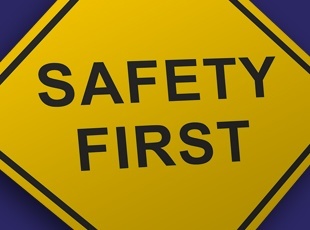One of the best movie moments, in my opinion, is in the movie Miracle when coach Herb Brooks calls for each player to introduce himself, his hometown, and for whom he plays. The players do not originally understand the request, stating the college for whom each played.
The situation and morale continue to decline until after a tie game against the Norwegian National Team in Oslo, Coach Brooks makes the team run conditioning drills until forward Mike Eruzione responds with the answer Brooks was looking for all along, “I play for the United States of America.”
What does this mean for safety? With a recent uptick in mergers and acquisitions in engineers and constructors across the world, according to FMI Mergers and Acquisition Report, you could be seeing a few new faces on site in the future.
These new workers could be accustomed to different equipment, different processes, and different organizational dynamics.
Simply put, an acquisition or merger requires the merging of cultures, and as many organizations have learned, merging two company cultures is an arduous, time-consuming, and stressful process that many underestimate.
When merging companies underestimate the work that goes into merging cultures, bad things happen.
Think about it this way. You can be compliant, the company with which you’re merging can be as well. However, just as there are different ways at training workers, there could be two completely different safety programs in place (it’s actually why custom safety programs are more effective than generic ones—tailored to suit your organization so that everyone is on board).
Two paths to compliance, when you need one. What can you do?
A recent Safety + Health Magazine Article highlighted the challenges and processes in merging two safety cultures into one. The most important consideration? It takes time.
If you were part of the original team that implemented a safety program, you already know this. Changing a culture is not easy, and it’s even harder if you need to modify two.
Safety + Health offered the following tips to help you define a new safety culture:
- Start from the Top: Conduct surveys to understand where your organization stands, including hourly opinion of management commitment to safety and management’s opinion of its own safety commitment.
- Take a Hands-On Approach: Getting employees engaged in safety is one of the key pieces in implementing a new and merging existing safety cultures. If employees feel that they are empowered in a safety program and feel that their opinions are supported by leadership, they will be more likely to adjust.
- Speak the Same Language: Getting everyone on the same page, from hourly employee to executive leadership is going to be complex but rewarding. For local mergers, this could be as simple as implementing and training employees on the same program. For large employers, it becomes important to develop standardized best practices, so that your team in Texas will have the same experience as the team in Tennessee.
- Take Your Time: For companies like AGL Resources and Nicor, which merged in 2012, the merging of safety cultures is still ongoing. You’re no longer company A and company B. You are one company united: Company C.
So what can the movie Miracle teach you about mergers and safety? You’re all in this together—make the most of it (minus the conditioning drills).
Gradually, cultures align. The result is a bigger, better – and safer – organization.
Optimum Safety Management can help new companies, existing companies, and merging companies develop an effective and sustainable safety program that can save your employees lives while saving your organization money.
Learn more about how an effective safety management program can provide your organization improvements in productivity, profitability, and engagement—Your Return on Safety—by contacting us today.








